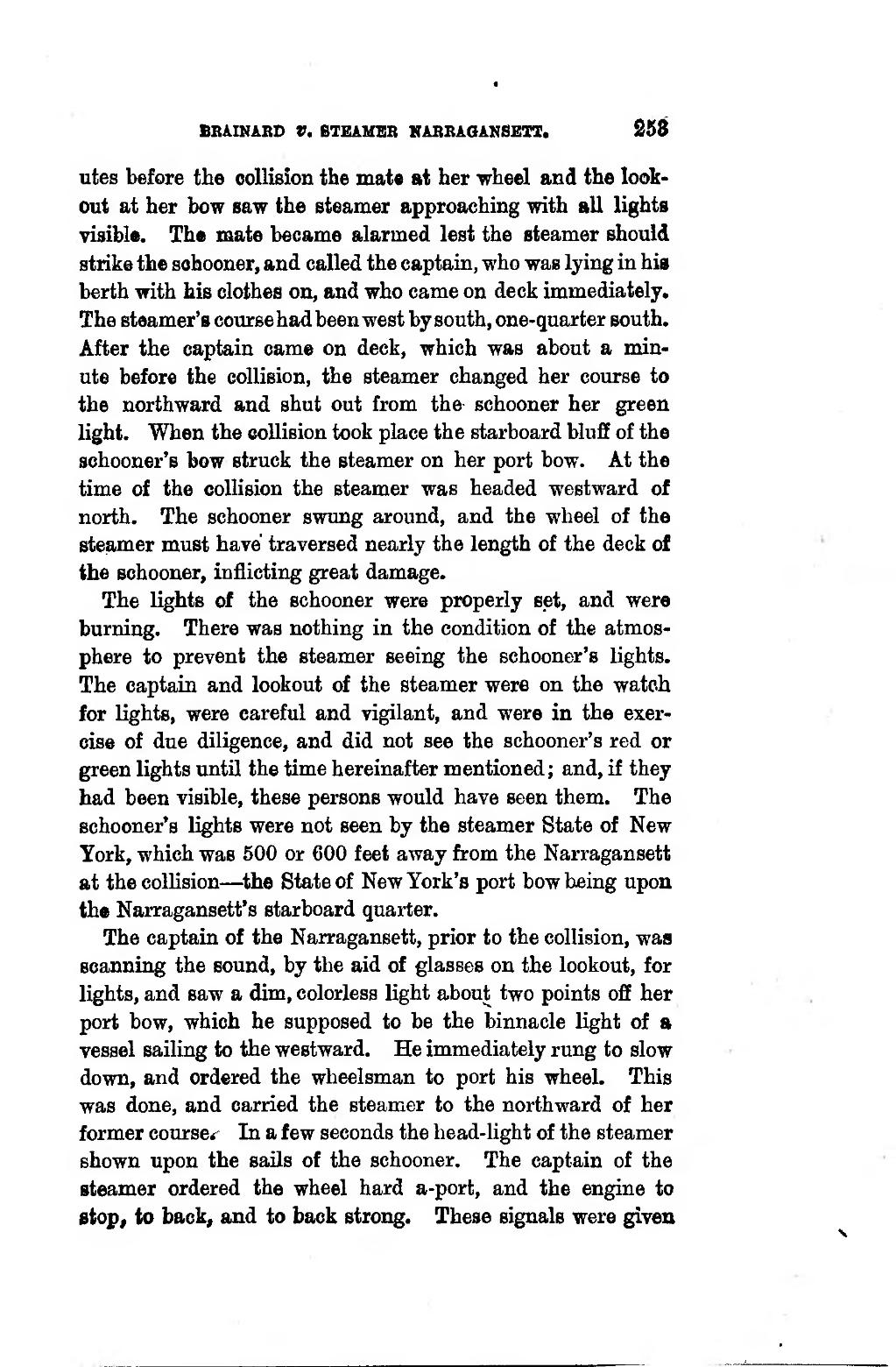BBAINABD V. 6TEAMEB KABBiSANSEXT. 253 �utes before the collision the mat« at her wlieel and the look- out at her bow saw the steamer approaching with ail lights visible. The mate became alarmed lest the steamer shouid strike the sohooner, and called the captain, who was lying in hia berth with his clothes on, and who came on deck immediately. The steamer'» course hadbeenwest bysouth, one-quarter south. After the captain came on deck, which was about a min- ute before the collision, the steamer changed her course to the northward and shut out from the schooner her green light. When the collision took place the starboard bluff of the Bchooner's bow struck the steamer on her port bow. At the time of the collision the steamer was headed westward of north. The schooner swung around, and the wheel of the steamer must have traversed nearly the length of the deck of the schooner, inflieting great damage. �The lights of the schooner were properly set, and were burning. There was nothing in the condition of the atmos- phere to prevent the steamer seeing the schooner's lights. The captain and lookout of the steamer were on the watoh for lights, were careful and vigilant, and were in the exer- cise of due diligence, and did not see the schooner's red or green lights until the time hereinafter mentioned; and, if they had been visible, these persons would have seen them. The schooner's lights were not seen by the steamer State of New York, which was 500 or 600 feet away from the Narragansett at the collision — the State of New York's port bow being upon the Narragansett's starboard quarter. �The captain of the Narragansett, prior to the collision, was Bcanning the sound, by the aid of glasses on the lookout, for lights, and saw a dim, colorless light about two points off her port bow, which he supposed to be the binnacle light of a vessel sailLng to the westward. He immediately rung to slow down, and ordered the wheelsman to port his wheel. This was done, and carried the steamer to the northward of her former course^ In a few seconds the head-light of the steamer shown upon the sails of the schooner. The captain of the steamer ordered the wheel hard a-port, and the engine to stop, to back, and to back etroug. These signais were gîveu ����
